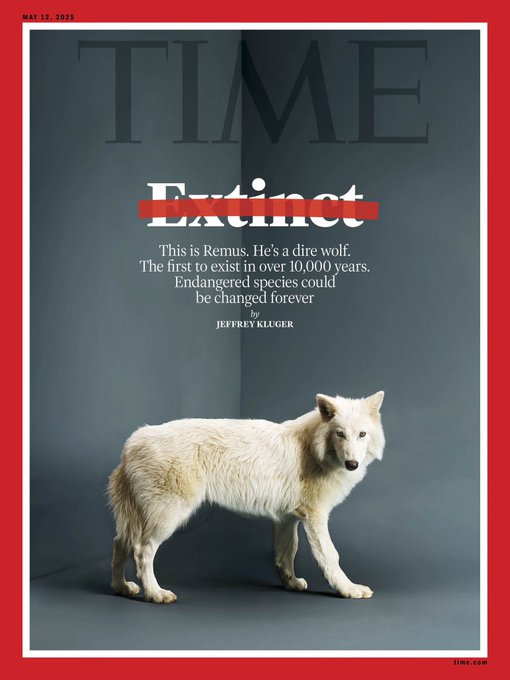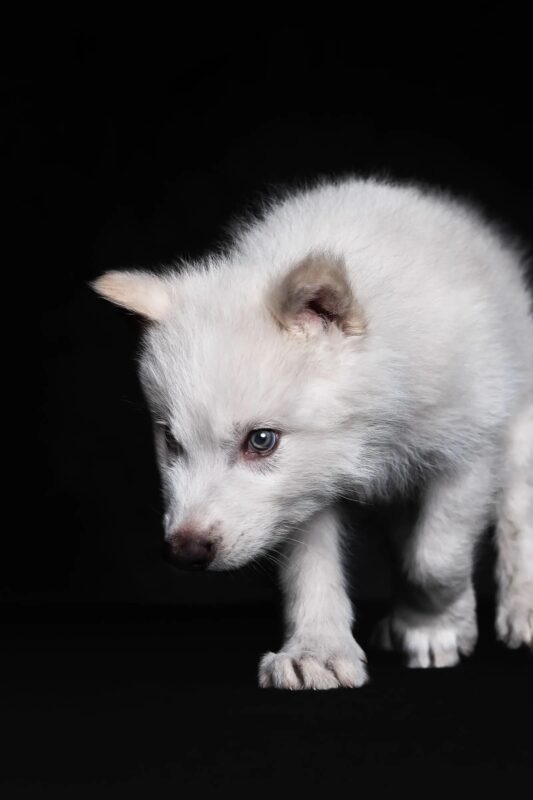News
The Return of the Dire Wolf: What De-Extinction Really Means for Our Future
The First Howl in 10,000 Years
The idea of resurrecting extinct species once belonged strictly to the realm of science fiction. But thanks to the audacious work of Colossal Biosciences, it is now part of our reality. With the births of Romulus, Remus, and Khaleesi—genetically engineered pups modeled on the extinct dire wolf—the world heard a howl that hadn’t echoed across the Earth for over 10,000 years.
These animals are not the result of traditional cloning but precision genetic engineering, with just 20 edits in 14 genes of a common gray wolf to recreate the ancient predator. The results are startling: massive size, iconic white coats, wider skulls, and that primal, bone-deep howl. And yet, these new wolves live not in the wild, but on a 2,000-acre ecological preserve, under 24/7 surveillance.
So what does their return really mean?
From Blood to Beast: The Science of Re-Creation
Unlike Dolly the sheep, which was cloned via invasive tissue sampling, Colossal used a less invasive method, extracting endothelial progenitor cells (EPCs) from a blood sample. These were then genetically edited to match ancient dire wolf DNA and developed into embryos inside denucleated ova.
“We think it’s a game changer,” said George Church, co-founder of Colossal and a professor of genetics at Harvard and MIT.
The engineered pups were born via C-section, hand-reared, and then bottle-fed when their surrogate mother became too attentive. Raised on a specialized diet of beef, horse meat, liver, and even puppy chow, these pups are now strong, healthy, and distinctly wild.
A Protected Life… But a Lonely One?
Despite their health and size, life in captivity poses its own challenges.
- Dire wolves are believed to have lived in large packs, roaming vast territories of up to 1,000 square miles.
- Romulus, Remus, and Khaleesi, however, share just 2,000 acres.
- Their social circle includes only themselves.
As Beth Shapiro, Colossal’s Chief Science Officer, noted:
“They’re not capable of living in the wild… They’re not going to be able to get a splinter without us finding out.”
That intimacy offers unprecedented scientific insight—but perhaps at the cost of a life true to their nature.
From Wolves to Mammoths: What’s Next for Colossal?
Colossal’s ambitions extend far beyond the dire wolf. On its de-extinction wishlist are:
- The Woolly Mammoth
- The Thylacine (Tasmanian Tiger)
- The Dodo
In March, they revealed their first woolly mouse, a creature genetically modified to express traits like fat metabolism and a shaggy golden coat—hallmarks of its ancient mammoth ancestors. These are early steps on the road to a woolly mammoth birth by 2028.
Unlike the wolves, the mammoth resurrection poses staggering logistical questions. Elephants, the mammoth’s closest relatives, are highly social, roam tens of miles daily, and form tight-knit family units.
“One or even five woolly mammoths is not a woolly mammoth life,” says Stephen Latham, director of Yale’s Center for Bioethics.
How do you rebuild a species if you can’t rebuild its ecosystem?

The Ethics of Playing God
While Colossal’s efforts are dazzling, critics urge caution:
- Invasive species risks
- Animal suffering during cloning
- Unknown long-term ecological effects
“There’s a lot of suffering involved in that,” said Robert Klitzman of Columbia University. “There are going to be miscarriages.”
Even within Colossal, the future is viewed with both hope and humility. For every awe-inspiring breakthrough, there are ethical landmines yet to be navigated.
Saving the Living: The Red Wolf and the Ghost Allele Project
Colossal isn’t only focused on the past—it’s trying to save the endangered red wolf, now with fewer than 20 individuals in the wild.
They’ve cloned four red wolves using ghost alleles—genetic variants found in wild canids along the U.S. Gulf Coast that suggest hidden red wolf ancestry. This could help restore genetic diversity and revitalize the population.
Why It Matters:
- Red wolves play a critical ecological role: controlling deer, raccoon, and opossum populations.
- Genetic bottlenecks threaten their long-term survival.
- Colossal’s Ghost Wolf program could serve as a model for conserving endangered species through genetic revival.

The Bigger Picture: What Is De-Extinction Really For?
For Colossal, de-extinction isn’t about nostalgia—it’s a tool for ecological restoration and a moral obligation. By reversing what human activity destroyed, they hope to restore balance to ecosystems, save endangered species, and even prepare for a harsher climate future.
“If we want a future that is both bionumerous and filled with people,” says Shapiro, “we should be giving ourselves the opportunity to reverse some of the bad things that we’ve done to the world.”
Final Thoughts: Evolution, Engineered
The howl of Romulus and Remus is more than a sound—it’s a signal.
It’s the sound of science redefining what it means to be alive, what it means to be extinct, and what role humans now play as architects of biodiversity. Whether this power is wielded wisely or recklessly may define not only the fate of recreated creatures—but our own place in nature’s future.
As Beth Shapiro puts it:
“We are an evolutionary force at this point. We are deciding what the future of these species will be.”
🔗 Further Reading and Resources:
- TIME: The Return of the Dire Wolf
- Colossal Biosciences Official Website
- Yale Interdisciplinary Center for Bioethics
- Center for Biological Diversity
- Learn about the red wolf
See more at here: Kadarktee
